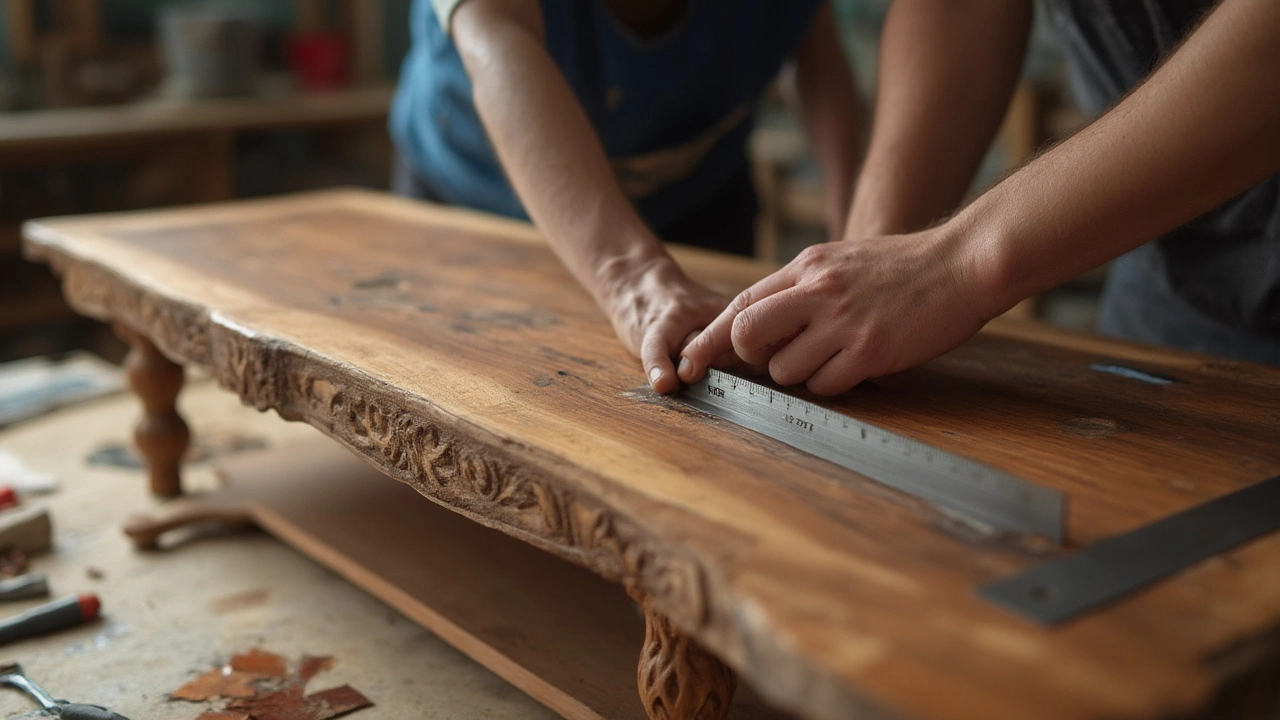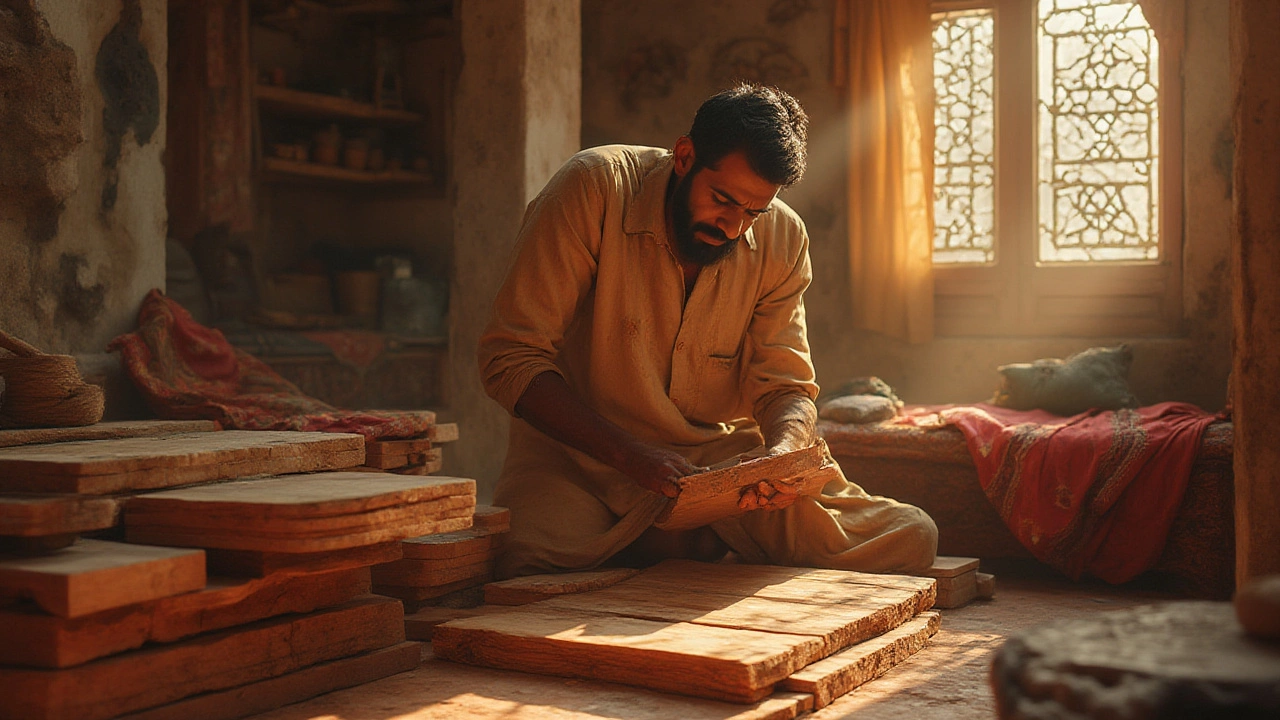Walk into any living room and all eyes land right on the coffee table. It’s kind of wild, isn’t it? Guests gather around it, your feet end up on it at midnight, and somehow every important discussion circles right around that slab of wood between your couch and chair. But here’s what trips up a lot of people building their own coffee table, or even just buying one: how thick does that wooden top need to be?
The Basics: Why Coffee Table Thickness Even Matters
Let’s get this straight—a coffee table isn’t just there to balance a remote control or the occasional magazine. It has to stand up to weight, spills, and sometimes even the surprising thud of someone sitting where they shouldn’t. If the tabletop is too thin, it’ll bow, warp, or split. Too thick, and you’ll wonder how you’re supposed to move the beast (and your dog keeps bumping into the edges). The sweet spot is all about balance: style, strength, and how the piece fits in your room.
Here’s something worth chewing on. The average load on a coffee table can hover around 50 to 100 pounds at any moment, especially during gatherings. Factor in someone inevitably plopping down on it (please don’t), and you’ll need a solid tabletop. Also, wood changes with seasons—expanding and contracting as humidity rises and falls—so thickness gives you peace of mind against warping.
Showrooms and furniture makers often settle on a range between 1 inch (25 mm) and 1.5 inches (38 mm) for the ideal tabletop thickness. Go thinner, and you’ll see droop after a few months. Go thicker than 2 inches and you’re adding a lot of unnecessary weight—unless you’re chasing a super chunky look on purpose.
For illustration, take a look at this table summarizing recommended tabletop thicknesses and their typical uses:
| Coffee Table Use | Recommended Wood Thickness |
|---|---|
| Everyday living (medium use) | 1” - 1.25” (25-32 mm) |
| Heavy use (kids, big gatherings) | 1.25” - 1.5” (32-38 mm) |
| Minimalist / modern designs | 0.75”+ (19+ mm) with good support |
| Chunky / statement pieces | 1.5”+ (38+ mm) |
Remember, it’s not just about the tabletop. The whole structure—legs, joints, supports—needs to work in harmony, or your coffee table will squeak, sag, or worse, collapse in dramatic fashion.
The Science (and Art) of Wood Thickness
Alright, let’s get into the nuts and bolts. Not every wood behaves the same. Dense hardwoods like oak, maple, and walnut perform much better at thinner dimensions than softer woods like pine or fir. For example, a 1-inch oak tabletop can feel rock solid, but you’d want at least 1.25 inches with pine to get the same stability. And wood isn’t just wood: its grain pattern, age, drying method, and country of origin all play into strength.
Moisture content is another sneaky factor. If your slab of wood is cut fresh and slapped onto your table frame without proper drying, it’ll move—a lot. Dried, kiln-baked wood stays truer to thickness and won’t suddenly warp out of shape. Traditional wisdom in furniture making says wood should be dried to a moisture content below 10% before becoming a table. Less movement equals less frustration down the road.
Curious about glue-laminated tops? Layering thinner planks together with strong adhesives can make wood act denser and more stable. That’s why so many commercial tables feel bulletproof even at a seemingly slight thickness.
Did you know: classic mid-century coffee tables often sported a ¾-inch top (just about 19 mm), but relied on robust underframes to deliver sturdiness? Modern designs sometimes go even thinner for looks, but you’ll usually see hidden metal or cross braces underneath, helping resist bending without adding heft.

Practical Tips for Choosing the Right Thickness
Don’t get trapped by whatever random plank you find at the hardware store. Assess your room and what you plan to put on the table most of the time. Got toddlers who’ll treat it like a jungle gym? Lean on the thicker side—1.25 inches or more. If your evenings are more about well-placed books and the odd glass of wine, an inch will do fine… provided you’re using sturdy wood, not particle board.
Plywood can work, but make sure it’s high-quality furniture-grade stuff and at least an inch thick. If you’re trying to save weight for a mid-century vibe, check if you can add a slim metal underframe. Even a ¾-inch solid top won’t sag if supported every 20 inches or so underneath.
Edge profiles can fool the eye. “Waterfall” or chamfered edges that taper downward make thinner tables look chunkier, but remember, only the center resists the pressure. Always run your palm across pre-fab options at stores: if it flexes with a little push, imagine how it’ll handle after a year in a busy household.
If you’re going for extra wide tables (say, over 36 inches across), up the thickness or include an extra under-table support bar to keep things steady. And honestly, skip the glass-topped trend if you want to keep dents, dings, and constant cleaning off your daily to-do list. Solid wood rules for this one.
Design Choices: Balancing Style and Substance
The thickness you pick messes with the whole “vibe” of the room. Thick, chunky slabs (think 2 inches or more) throw out a cozy, rustic farmhouse look. Thin and stretched wood tops, on the other hand, scream mid-century chic or modern elegance but depend on smart engineering.
Ever seen those hairpin leg coffee tables all over social media? They often use 1-inch or 1.25-inch hardwood, so the table stays solid but doesn’t compete visually with the thin metal legs. If your room is small, don’t go for a coffee table that looks like a butcher block from a steakhouse—it’ll dominate the space. A lighter looking, thinner slab will keep the view open, but make sure it’s paired with supportive framing underneath if you don’t want it to sag by next summer.
Here’s a pro tip: mix up your materials for maximum stability and style. Pair a 1-inch hardwood top with metal or engineered wood sides, or even add a floating undershelf with slim supports. Not only does that give you extra storage, but it also strengthens the whole table so you can go lighter on the main top without giving in to pesky warp or bend.
If you’re refinishing or buying antique, measure the thickness before you pay a cent. Older pieces may have settled, shrunken, or even split over decades of use. Add a few under-table crossbars if you’re worried about structure—it can save a family heirloom from sudden collapse.

Real-World Troubleshooting and Upgrades
Alright, so maybe you already have a table that feels like it’s a little too thin for comfort. You’ve got options. Adding a removable under-brace, like a wooden or unobtrusive metal beam, can shore up flimsiness fast. If your top sags in the middle but you love everything else, glue and screw a support bar just underneath—it’s out of sight and gives a major upgrade in strength.
Want to retrofit an old or thrifted table? Sand down the top, add an extra ¼-inch hardwood veneer, and refinish. That delivers both beauty and brawn in one go. You can also attach decorative edge trim to bulk up the appearance of a thin slab if you’re craving that chubbier look without the back-breaking weight.
Keep an eye on seasonal changes. Even with the ideal thickness, all woods will “move” a little as the air gets drier or more humid. If you spot small cracks or warping, a quick touch-up with food-safe oil or wax can help minimize movement and keep the piece looking fresh and strong.
And here’s the bottom line: don’t let fear of making a mistake freeze you out from picking, building, or upgrading a coffee table. If you stick to the coffee table wood thickness ranges above and match your wood choice to your real world, you’ll end up with a coffee table that looks great, holds up to daily life, and earns its place at the center of your home.

